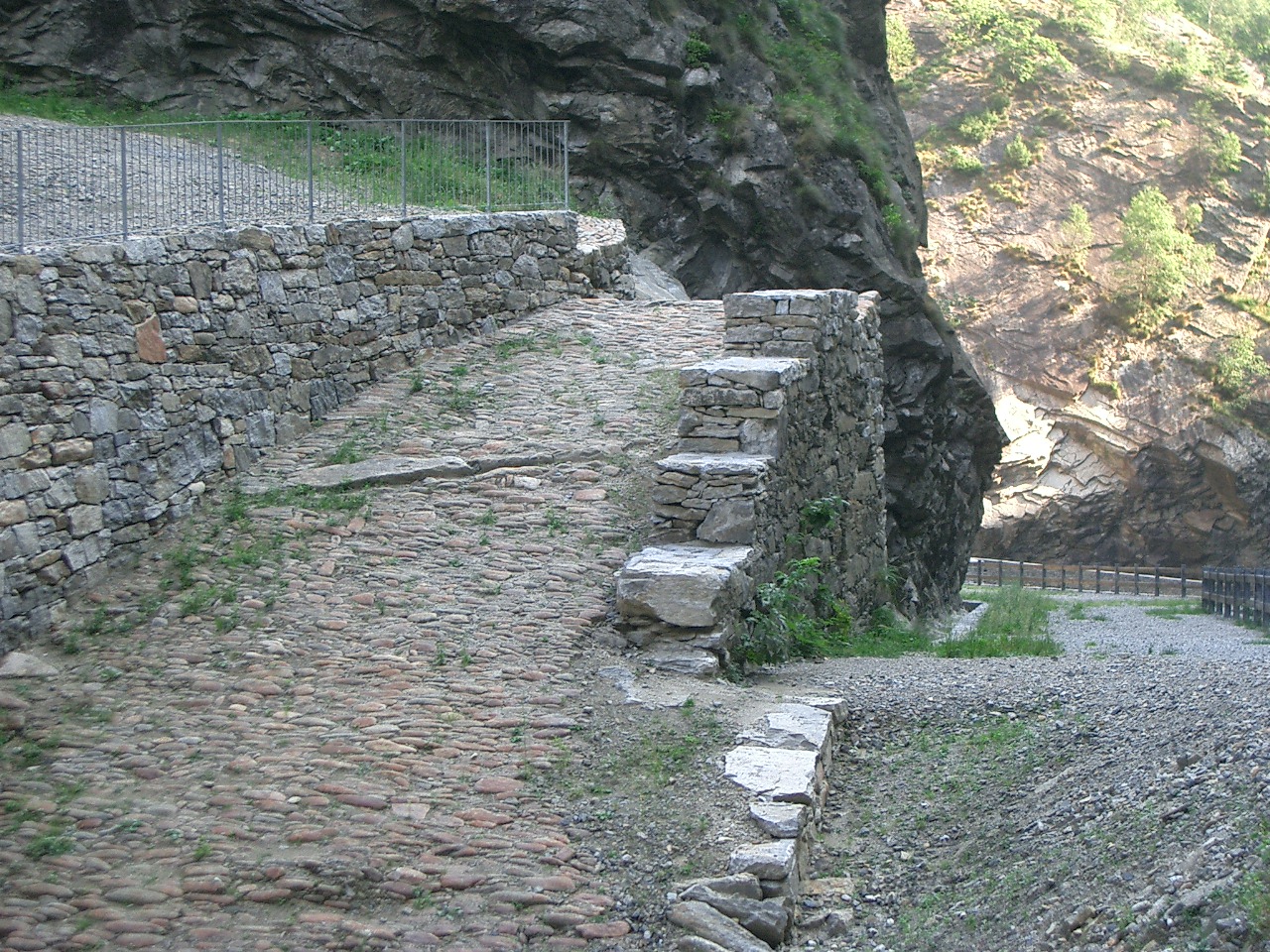Pro Media Leventina
| I | F | D |
News
Origin and Activity
Articles of the Association
Contact
Piottino
Tours through the gorge
History
Travel
Pictures
Projects
Piumogna (in
German)
Historische Strasse in der Piottino-Schlucht, Wiederaufbau und Aufwertung
(in German)
Information
Bellinzonese e Alto Ticino
Dazio Grande
Cultural
Routes Switzerland
Via Storia
|
|
|
|
|
|
|
|
|
|
|
|
|
|
|
|
7 Thoroughfares in 7 Centuries
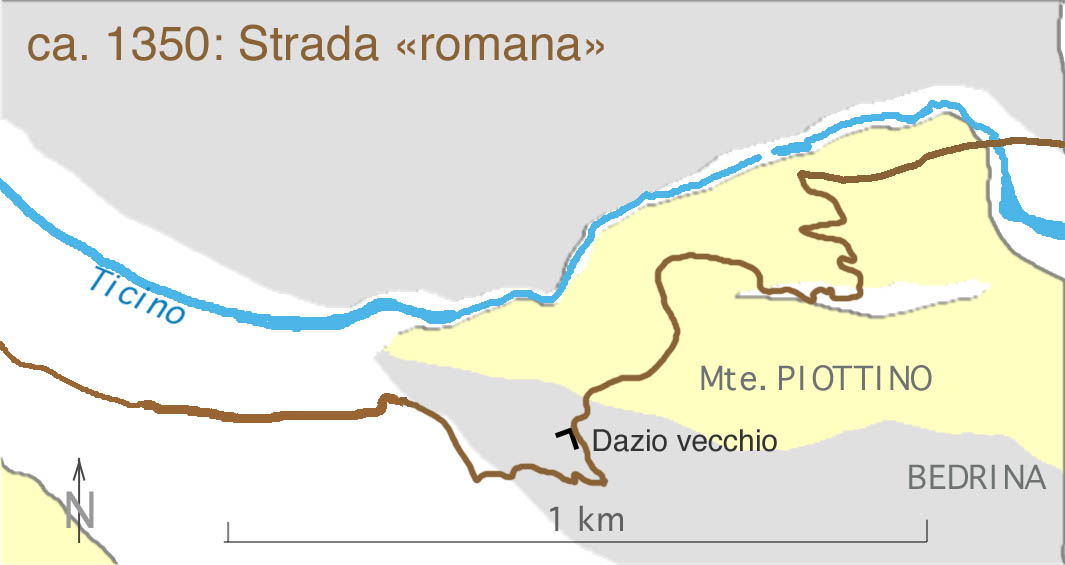 |
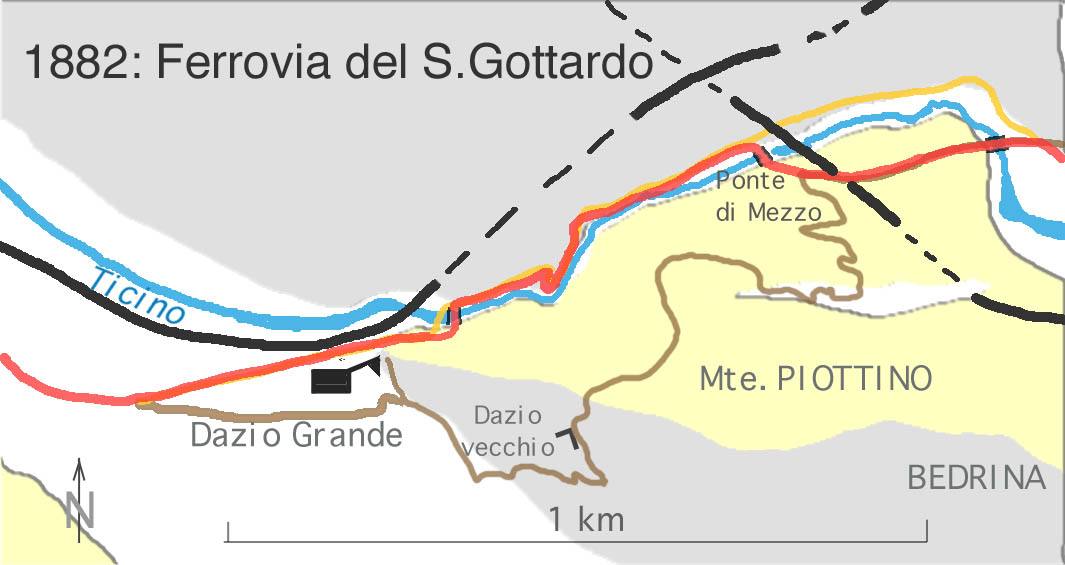 |
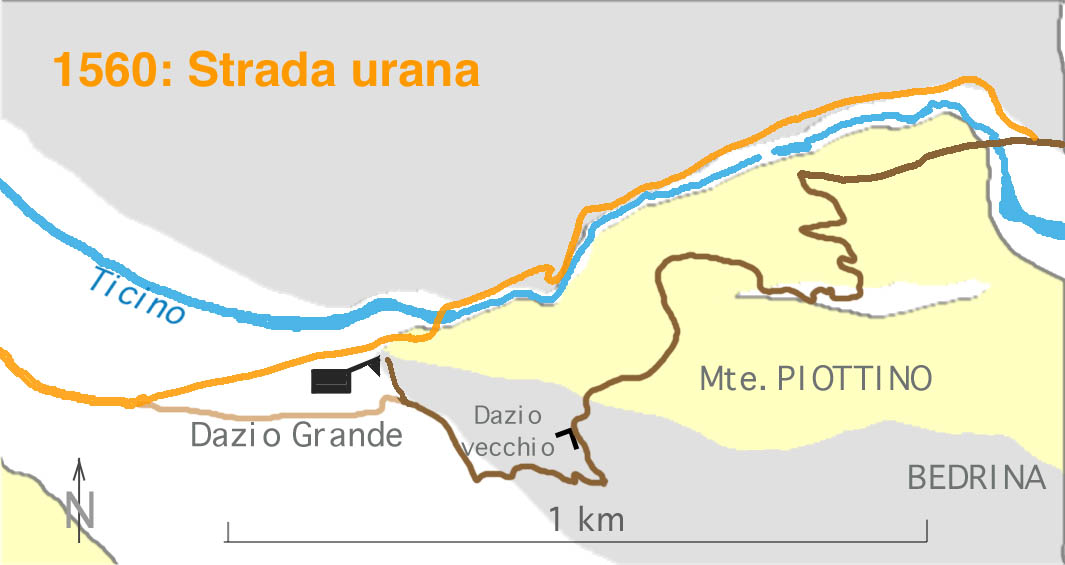 |
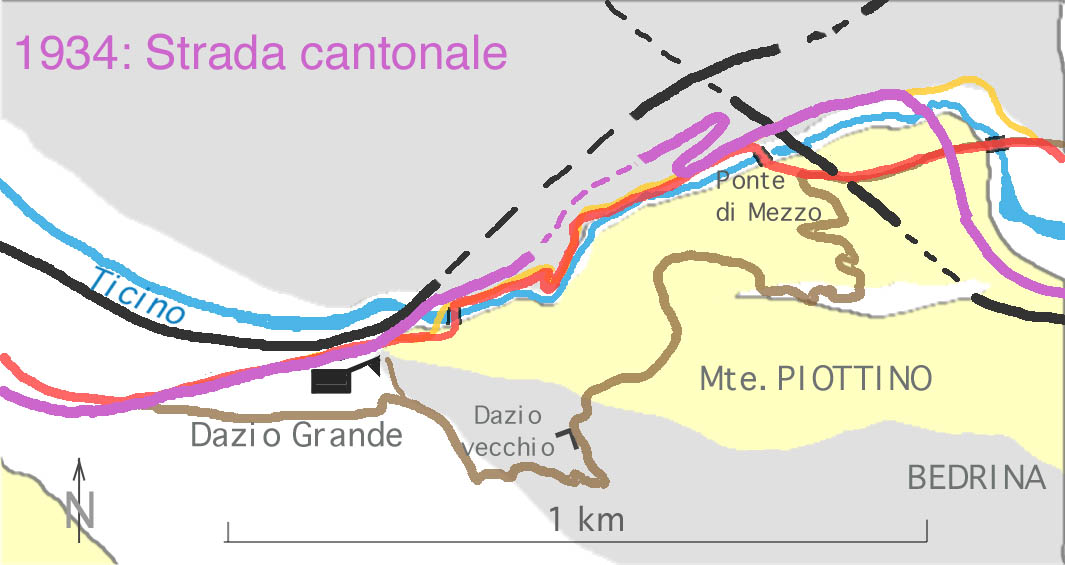 |
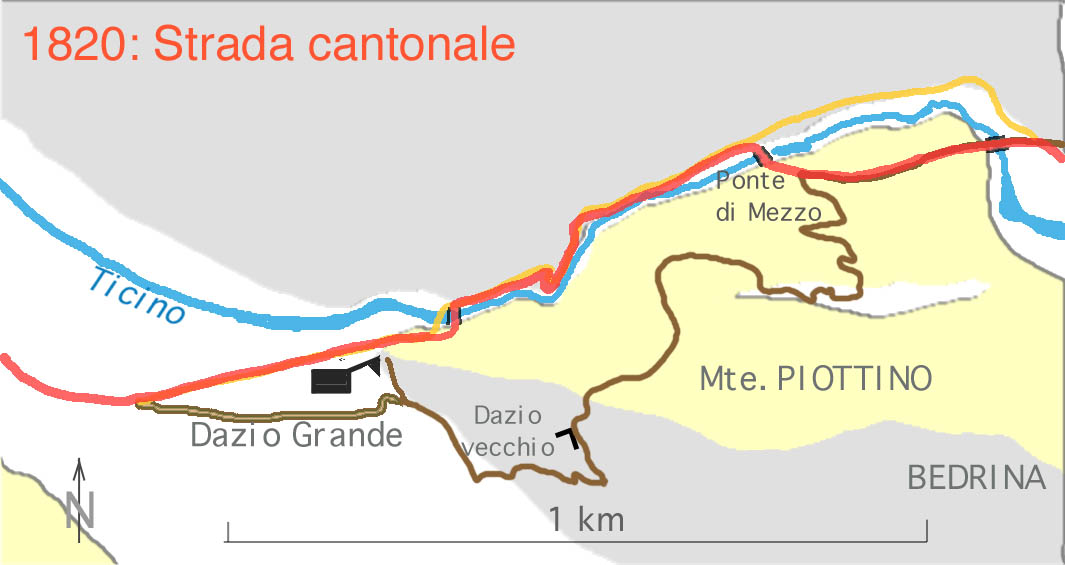 |
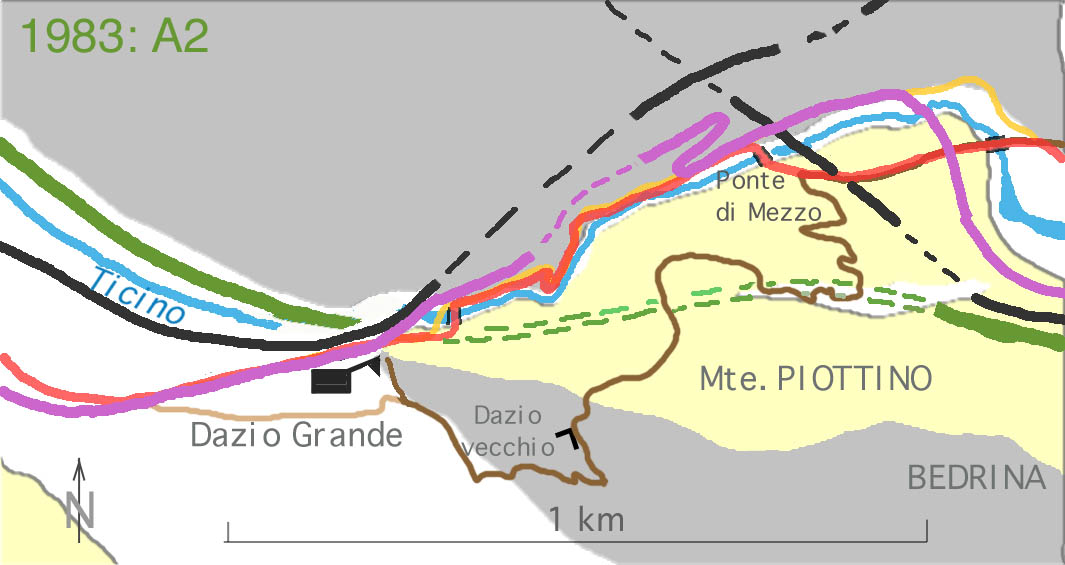 |
| 14th Century: "Roman Road" Belying its name, this early path was not constructed until after the opening of the Schöllenen-Gorge (north of Saint Gotthard), presumably during the 14th century. It winds up the steep slopes on the right-hand face of Mount Piottino to the ruins of the old customs post (DAZIO VECCHIO) located beyond the highest point of the pass and before the descent to the village of PRATO LEVENTINA. |
| 1560: Uri Mule Track During the 16th Century, the Ticino region was governed from the Forest Canton of Uri. The ruling authorities put into effect a plan to facilitate freight traffic by means of a more comfortable throughway with fewer drawbacks. For the first time, a mule track was built to run directly through the gorge. Furthermore, the Federal Council permitted establishment of a Customs House (Dazio Grande) on the new track. |
| 1820: Cantonal Main Road After achieving independence, the new Canton of Ticino began implementation of an extensive program of road building. The roads in the Leventina were considered to be in special need of improvement and in about 1820 the main road through the region was very considerably upgraded. For the purpose of conversion to a cantonal main road, the previous Uri Mule track in the Piottino Gorge was widened and built up to the standard needed to carry wheeled traffic. |
| 1882: Gotthard Railway (+ Basistunnel AlpTransit) The Gotthard Railway promoted economic development of the valley. However, in recent years this public service has undergone radical changes in its character due to transformation of its structure. For the most part, local traffic has now been transferred to a bus service operating between Airolo and Bellinzona. In order to satisfy the demands of modern international transportation, the functions of the "old line" will be taken over in due course by the BASIS TUNNEL (57 km) currently under construction. As of today, the future role of the old line itself is difficult to predict. |
| 1934: New Cantonal Main Road The tight curves of the earlier road through the gorge presented major obstacles to increasing automobile traffic. In 1934, therefore, the road was shifted into a new tunnel several metres further up. |
| 1983: Freeway A2 The freeway brought a multitude of man-made structures that imposed a new scale of dimensions on the landscape. Fortunately, though, they did not encroach on the impression of wilderness given by the gorge. After opening the freeway, the medieval track was left to fall into disuse. In view of its historic and scenic value, it has recently been restored by the Pro Media Leventina and has thereby been converted into a footpath which richly repays a visit. |
